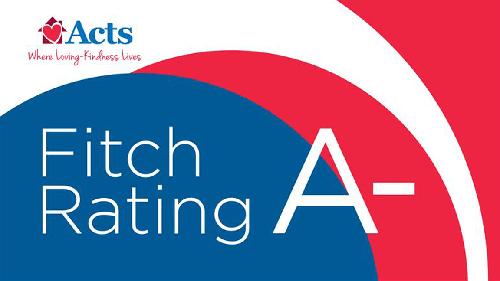What are the Different CCRC Contract Types?


Continuing Care Retirement Communities (CCRCs), also known as life plan communities, are residential communities that provide a continuum of healthcare services, including independent living, assisted living, and skilled nursing care, all within the same campus. There are several types of CCRC contracts offered to residents, each with their own set of benefits and financial agreements. The specific names and details of these contracts can vary from one CCRC to another, but there are some common CCRC contract types you might encounter:
1. Type A Contracts
Type A contracts, also called extensive contracts, are the most comprehensive and premium option within Continuing Care Retirement Communities. Under this CCRC contract, residents pay a substantial upfront entrance fee in addition to monthly fees. In exchange, they gain unlimited access to any type of care they require – from independent living to assisted living to skilled nursing care – all seamlessly provided within the same community, and crucially, without any subsequent fee hikes. That means if you are an independent living resident and at any point need the added care of assisted living, your monthly fee does not change.
Type A contracts are popular because residents don’t have to worry about paying market rates for healthcare in the future. Instead, residents can rest assured that their monthly fees remain stable even as they transition to higher levels of care, providing a sense of financial security and predictability. You always know what your costs are going to be, years if not decades into the future.
For example, an independent living resident without a Type A contract who eventually requires assisted living services could face significant additional monthly expenses. This scenario has substantial likelihood, given that someone turning 65 today has a 70% chance of needing some type of long-term care. This CCRC contract type offers the freedom to enjoy your golden years without having to worry about how to pay for healthcare costs or how much savings will be left to pass to your family.
Comparable to long-term care insurance plans, Type A contracts are the favored choice for people who value consistent and predictable monthly payments. Additionally, residents with Type A contracts may receive significant tax benefits related to the prepayment of healthcare. While the monthly fee may increase modestly due to inflation, it will not increase due to changing health needs. Consequently, when higher levels of care become necessary, it is seamlessly provided at the same exact rate residents have been paying.
2. Type B Contracts
Type B contracts, also known as Modified Fee-for-Service contracts, are like Type A contracts in that they provide access to amenities, meals, living accommodations, and a level of healthcare. Unlike Type A contracts, Type B contracts have lower entrance fees. However, expenses can rise when a higher level of healthcare is needed.
These types of CCRC contracts provide healthcare services at discounted rates for a set duration, which is usually around 30 to 60 days. During this initial period, residents can receive healthcare services at a reduced cost compared to what they would pay without the contract.
After the initial discounted period, residents are responsible for paying the full market rate for any assisted living or nursing care services they require. If a resident with a Type B contract needs extended care, they are responsible for paying market rates, which can be significant. According to CareScout, assisted living services averaged $5,350 per month in 2023, though it’s noted that the location, services, and amenities can obviously increase this cost. For example, the average in Washington, D.C. is $9,563 a month.
Type B CCRC contracts are suitable for those with short-term residency plans or minimal anticipated healthcare needs. But they lack long-term guarantees and could lead to unexpected out-of-pocket healthcare expenses if circumstances change suddenly.
3. Type C Contracts
Type C contracts, also known as fee-for-service contracts, have the most affordable entrance fee out of all the contract types. With a minimal upfront enrollment fee, it caters to those who lack the financial resources to cover the higher entrance fees associated with Type A or Type B CCRC contract types or prefer to risk lower costs now in the hopes they won’t ever need a higher level of care.
Under this agreement, residents pay the prevailing market rates for medical services only when they require them. However, as healthcare costs tend to rise over time, the expenses associated with Type C contracts can also increase.
This contract suits those with a reliable income source like a pension or annuity, ensuring ongoing coverage for medical costs. Unlike Type A or Type B contracts, Type C contracts do not typically receive tax write-offs because healthcare services are not pre-funded. But residents are not prepaying for care they may never need, making it a flexible choice for those with varying healthcare needs.
4. Rental Contracts
Rental CCRC contracts offer a short-term and flexible approach to senior living arrangements. With no substantial entry fee required, residents instead pay a smaller “community” fee, often just a few thousand dollars upon entry.
These contracts are typically structured as month-to-month arrangements, allowing residents greater flexibility in their living situation. However, monthly service fees are higher than those who pay a full entry fee upfront.
Like Type C contracts, residents with rental agreements are responsible for covering healthcare expenses out of pocket when needed. While rental contracts are ideal for short stays and offer immediate flexibility, they are much more costly in the long term compared to other types of CCRC contracts.
5. Equity or Co-Op Contracts
Equity of Co-Op CCRC contracts offer a unique arrangement where residents have ownership of their home within the community. Unlike other CCRC contracts, residents in equity contracts enjoy the benefits of homeownership. They pay monthly service fees to access amenities and for maintenance, like the responsibilities of any homeowner’s association.
One distinctive advantage is that the heirs of a resident under this contract can inherit the property, much like any other traditional home. However, healthcare expenses are paid out of pocket, like Type C contracts. Equity contracts are particularly well-suited for residents with long-term plans.
Choosing the Best Type of CCRC Contract for You
CCRCs offer a range of contract types, each tailored to meet the diverse needs and preferences of older adults seeking retirement living options. Carefully considering these contract options is essential to finding the perfect fit for your individual needs and financial situation. It can certainly feel overwhelming to compare different CCRC contracts on your own. Always rely on expert help to ensure you’re making the right decision.
The Acts Life Care Retirement Program
All Acts Retirement-Life Communities are CCRCs. Our Type A contract, called the Acts Life Care Retirement Program, ensures that your monthly fee will never increase because a higher level of care is needed. Acts also has a large network of communities that residents can visit or even relocate to and enjoy all the benefits. Explore our 28 CCRCs across nine states to find the senior living option that’s best for you.






